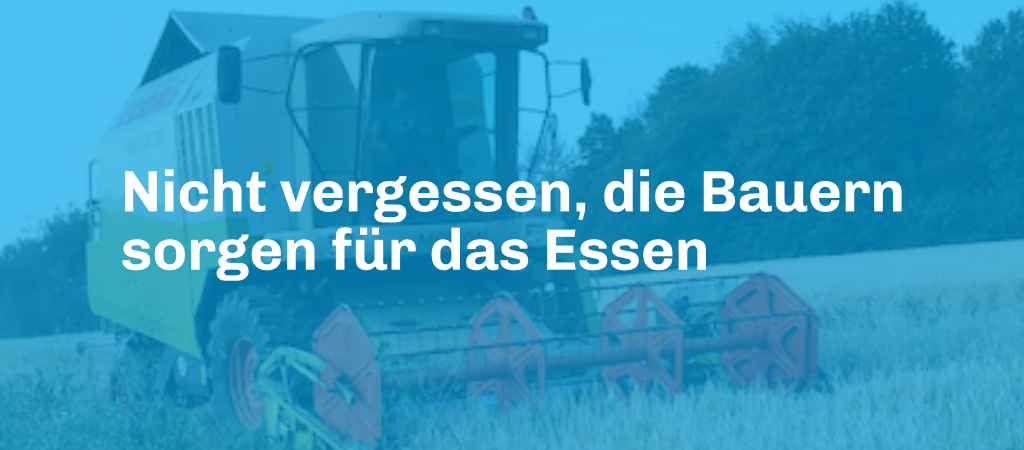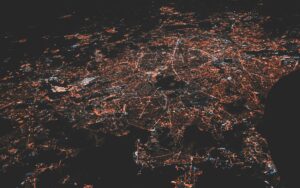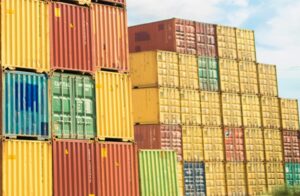I grew up in a small idyllic village where it was normal to have an own garden to grow your own food. Living at home, I have never experienced a shortage of food, regardless of whether it was vegetables or fruits. My family would also preserve the food to make it last throughout the winter. There were also several farmers planting and selling all kinds of crops. Now, many people have given up their gardens. The supermarkets sell everything so cheap that people will rather buy it than do the labor-intensive work themselves. Also, the number of farmers has decreased.
Food lower on priority list of digital natives
It leaves me wondering how food went down on the priority list of people. If you look at a report that has been published by the World Health Organization (WHO) in 2018 an estimated 820 million people did not have enough to eat. And this is sadly a growing trend. The experts state that this challenges achievement of the sustainable development goal of zero hunger by 2030.
The agriculture industry already underwent a drastic change in the past 50 years. Improved machinery, seeds, fertilizers, and irrigation led to increased cultivation of more land. But the next revolution is already here and can truly change the world. When we increase the connectivity and the capability to gather and analyze data, we can also increase the yield. This would also lead to more sustainable farming. Also, the COVID-19 pandemic has highlighted the need for a change, for more local produce.
The next revolution in agriculture
The digital change in the industry is currently on the right track. Many machines already come with connectivity and transmit data to the farmers, for example fuel consumption and grain moisture. But think about what is possible if not only the heavy machines such as combine harvesters and tractors are connected, but also your entire farm. It will be a lot more efficient and sustainable to get real-time information on the state of the soil, your produce, and the current conditions.
Though it sounds easy, it is not so easy in practice. While I have not yet come across a place in Finland that did not have at least a stable 4G network, at home I have. This is a problem in many rural areas. But instead of focusing on the problem, let’s focus on the solution. There are several sensors on the market which can operate via LoRa networks to start with. By investing into connectivity, we can bring agriculture to the next level. Imagine the impact this could have on a farmer. One would be able to gather information from seeding to harvest, ensuring that the produce always has the best possible conditions.
Further, with a platform like BaseN Platform, a farmer can also access historical data to see trends – whether this is regarding the climate and weather change – or the conditions and changes of different fields. Everybody can benefit from this, as the overuse of fields will be flagged immediately, and farmers can take corrective actions.
Stay tuned to read more about how old Mac Donald connected his farm.
// Sonja





11 replies on “Old Mac Donald had no connected farm”
To the basen.net Administrator!
Ready to earn effortlessly?
Introducing the World’s Fastest & Easiest Breakthrough for Automated $300+ Commissions from Free Traffic!
CLICK HERE https://cutt.ly/2wgZIVXe TO CONTINUE
It’s beginner-friendly, requiring just 3 simple steps. No experience needed!
Imagine making $300+ with just a few clicks. It’s within reach.
Your journey to financial freedom starts with a simple click. Don’t miss out!
With kindest thoughts
Cyrus
France, PAYS DE LA LOIRE, Nantes, 44100, 65 Place Stanislas
If you would like to unsubscribe from these types of offers, please reply to this email.
To the basen.net Admin!
Ready to earn effortlessly?
Introducing the World’s Fastest & Easiest Breakthrough for Automated $300+ Commissions from Free Traffic!
CLICK HERE https://cutt.ly/2wgZIVXe TO CONTINUE
It’s beginner-friendly, requiring just 3 simple steps. No experience needed!
Imagine making $300+ with just a few clicks. It’s within reach.
Your journey to financial freedom starts with a simple click. Don’t miss out!
Thanks
Gabriella
Switzerland, NA, Goumoens-Le-Jux, 1376, Stradun 18
To end the receipt of these specific types of offers, kindly reply to this email.
Hello basen.net Administrator!
Ready to earn effortlessly?
Introducing the World’s Fastest & Easiest Breakthrough for Automated $300+ Commissions from Free Traffic!
CLICK HERE https://cutt.ly/2wgZIVXe TO CONTINUE
It’s beginner-friendly, requiring just 3 simple steps. No experience needed!
Imagine making $300+ with just a few clicks. It’s within reach.
Your journey to financial freedom starts with a simple click. Don’t miss out!
With appreciation
Berenice
Norway, NA, Vear, 3173, Firingveien 79
Should you no longer want to receive these types of offers, just respond to this email.
Can you imagine a scenario where Old MacDonald’s lack of a connected farm had a positive impact on his farming practices?
Howdy!
It’s been a while, but I recently stumbled upon a very negative opinon online about basen.net and thought it important to reach out to disprove this review.
It looks like there’s some negative press that could be potentially damaging.
Knowing how fast misinformation can spread and not wanting you to be taken by surprise, I felt the need to warn you.
Here’s the source of the info:
https://ibit.ly/t2c4y
I’m hoping it’s all a mix-up, but I believed it necessary you should know!
Best wishes,
Jina Vaughn
It’s been a while since our last conversation, but I came across a slam piece online about basen.net and felt it necessary to email you guys to confirm this article.
It looks like there’s some rumors circulating that could be harmful to your reputation.
Understanding how easily stories can get out of hand and wishing not you to be taken by surprise, I felt the need to notify you.
Here’s the source of the info:
https://ibit.ly/VbiP_
I hope it’s all a simple confusion, but I believed it necessary you should know!
Wishing you all the best,
Hong
hey, jsut a warning
We haven’t spoken in a while, but I just saw something online about basen.net and immediately needed to reach out to validate this nonsense.
It seems like there’s some unfavorable news that could be harmful to your reputation.
Being aware of how easily stories can get out of hand and hoping not you to be unprepared, I thought it best to notify you.
Here’s where I came across the info:
https://ibit.ly/Ikn8d
I hope it’s all a misunderstanding, but I believed it necessary you should know!
cya later,
Mozelle Toombs
Howdy!
It’s been some time since we last communicated, but I just read a slam piece online about basen.net and thought it was important to message you guys to validate this review.
It seems like there’s some unfavorable news that could be detrimental.
Being aware of how easily stories can get out of hand and hoping not you to be unprepared, I felt the need to warn you.
Here’s where I found the info:
https://ibit.ly/2M825
I hope it’s all a mix-up, but I thought it best you should know!
Best,
Kasey Jewell
Hey hey!
It’s been a while since our last conversation, but I just read a very negative opinon online about basen.net and felt compelled to email you guys to disprove this nonsense.
It seems like there’s some negative press that could be detrimental.
Understanding how quickly rumors can spiral and hoping not you to be caught off guard, I decided to inform you.
Here’s where I came across the info:
https://ibit.ly/cR3C3
My hope is it’s all a simple confusion, but I believed it necessary you should know!
talk to you soon,
Noah Jacks
hi there!
It’s been some time since we last communicated, but I recently stumbled upon a slam piece online about basen.net and felt it necessary to reach out to disprove this article.
It appears like there’s some negative press that could be detrimental.
Knowing how easily stories can get out of hand and not wanting you to be caught off guard, I thought it best to notify you.
Here’s where I found the info:
https://ibit.ly/1QIyx
I’m hoping it’s all a misunderstanding, but it seemed prudent you should know!
Best,
Rozella
Dear basen.net Owner!
Are you ready to transform your videos into viral masterpieces? VidSupremacy is your secret weapon for success! Here’s why you should act now and visit the official website:
Rapid Video Generation: Need hundreds of videos for TikTok, Instagram Reels, or YouTube Shorts? VidSupremacy automatically creates engaging videos based on your chosen keywords. Say goodbye to wasting precious time on manual editing!
Guaranteed Success: With VidSupremacy, you’ll captivate your target audience. Whether you’re an influencer, entrepreneur, or simply want your voice heard, your videos will be on everyone’s lips.
Special Early Bird Offer: As an Early Bird, you have the chance to grab VidSupremacy at a discounted price. Plus, enjoy exclusive bonuses that will supercharge your success!
Don’t wait any longer! Visit the special page now and discover how VidSupremacy can revolutionize the way you create and distribute videos.
Your success is just a click away! https://cutt.ly/8w7rqawe
With appreciation
Bettina
Brazil, SP, Cruzeiro, 12703-340, Rua Sao Dimas 602
If you want to be removed from future offers like this, kindly respond to this email.